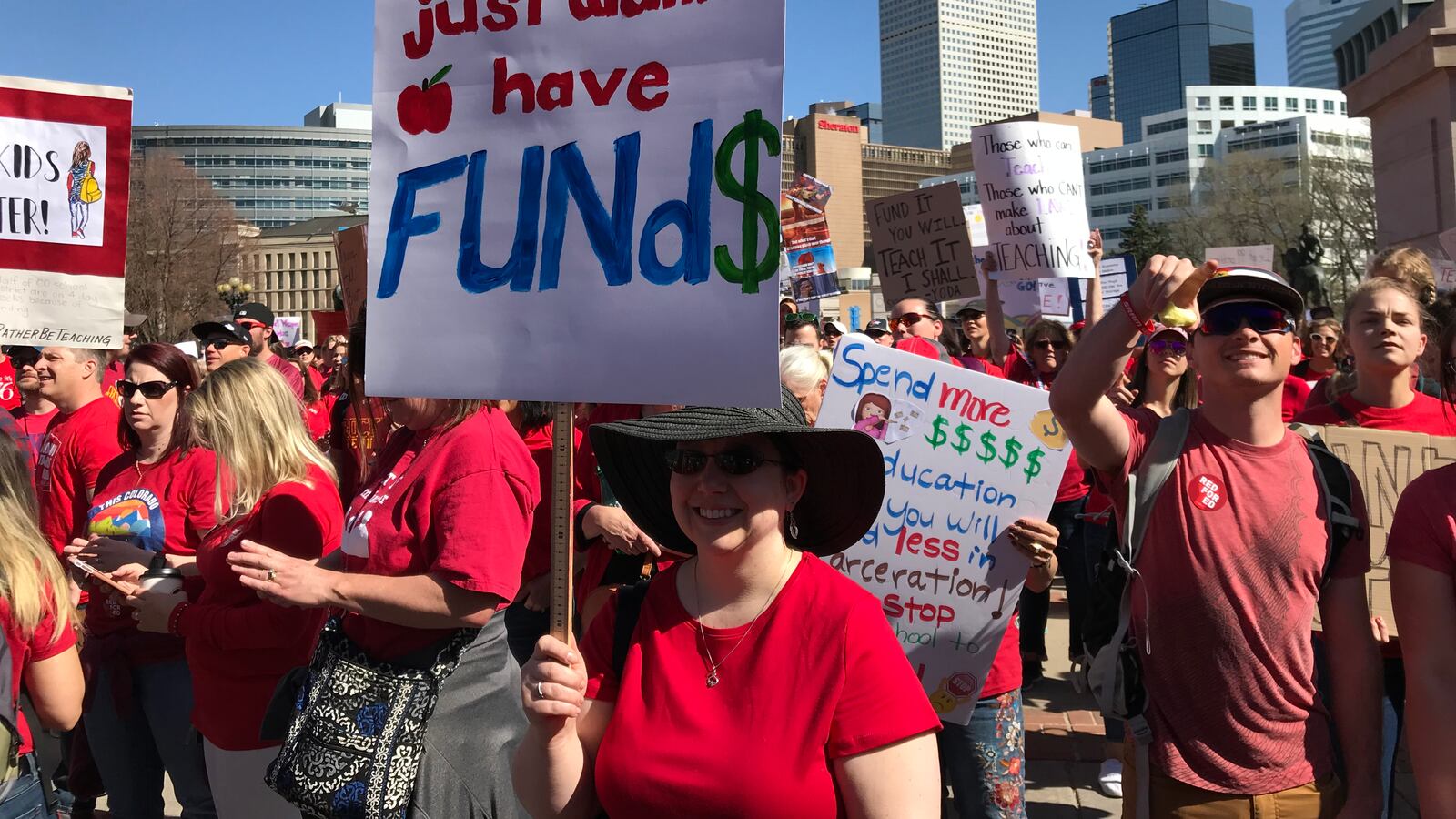Newly minted college graduates considering the teaching profession probably don’t expect lucrative salaries. But they might not realize how big a financial hit they face: Teachers now earn about 20 percent less than other college-educated workers, according to a new report by the Economic Policy Institute, a union-backed think tank.
This teacher pay penalty has persisted and even grown modestly in recent years, the latest numbers show. It may be one reason why a majority of parents for the first time say they don’t want their children to become teachers, according to a recent poll. Low pay is also one of the chief drivers of recent teacher protests across the country.
The analysis bolsters those teachers’ arguments, though it shows that some of the salary gap is made up for by better healthcare and retirement benefits. But even accounting for benefits, there remains a 11 percent pay penalty for teachers.
“As we have shown in our more than a decade and a half of work on the topic, relative teacher pay has been eroding for over a half a century,” write EPI researchers Sylvia Allegretto and Lawrence Mishel.
They find that, compared to other college graduates, teachers are paid nearly $350 less per week in salary, or 23 percent less. They also use a more sophisticated approach that controls for demographics, including age and level of education. This shows similar results: an 18.7 percent pay gap.
Accounting for benefits, the gap is slightly larger than it was in 2015 and substantially larger than in 1994, when teachers were paid on par with similarly educated professionals.
“The wage penalty [is] on its own critically important as it is only earnings that families can put toward making ends meet,” the EPI authors note. “It’s only earnings that can pay for expenses such as rent, food, and student loan payments.”
Arizona’s teachers face the largest salary penalty, at 36 percent. That state has also been roiled by waves of teacher activism, including an effort to put a pay hike on the November ballot. (That was recently nixed by the State Supreme Court over a wording issue.) North Carolina, Oklahoma, and Colorado are next on the list.
The EPI study is just the latest of many attempts by researchers to determine whether teachers are really “underpaid.” That’s challenging to determine about any job, because compensation depends on a complicated web of factors like working conditions and job security, which can be hard to measure.
Critics of the EPI approach have argued that it doesn’t account for teachers’ greater job security thanks to tenure or fully capture the value of state-backed pensions. (In recent years, though, tenure and job protections have been weakened in a number of states, and other research suggests this deterred college graduates from entering teaching. A handful of states have also moved away from traditional pensions.)
Mishel of EPI counters that other factors, like not being able to take vacation when you want and the rigors of working with children, may make teaching less attractive. “You could point to a lot of factors that would make teachers need to get paid more,” he said.
The EPI report doesn’t distinguish between different groups of teachers, like those in high-poverty schools, who are much more likely to leave their schools than those in more affluent schools.
A separate study using a different approach finds that while high school teachers are substantially underpaid relative to similar workers, elementary and middle school teachers actually earn more money than they would in other jobs.
“It’s a mistake to treat teachers and teacher pay as a generic phenomenon,” said Dan Goldhaber, a professor at the University of Washington. “While it may be right that teacher pay is falling behind the pay levels of other professionals, the magnitudes really depend on what kind of teachers are being compared to what kinds of professionals.”
Another way to look at pay is to consider to what extent schools are experiencing teacher shortages. A 2017 report by the federal government showed that every state reported shortages in certain areas; some researchers argue that the real trouble is in states with particularly low pay and in areas like math, science, and special education.
Of course, the debate around teacher pay isn’t only focused on economic principles or debates about recruitment — it includes questions about basic fairness and economic justice.
“I can’t remember the last time I had a day off,” one Michigan teacher, who also works part time at a clothing store, told Vox. “I always had this understanding that I would never be rich as a teacher, but I never thought it would be this difficult to live on a teacher’s salary.” (Less than one in five teachers work a second job, though that’s higher than other workers.)
Another question is one of priorities: One school choice advocacy group points out that the number of teachers per student has risen between 1992 and 2015, as has the number of non-teaching staff in schools — even as teacher pay has flatlined.
What’s clear is that teachers’ salaries have been stagnant as other professionals’ wages have grown. Research suggests that pay affects who enters and who stays in teaching, which in turn affects student learning.
“The basic trend that teachers are losing ground relative to other college educated workers is pretty damning,” said Diane Whitmore Schanzenbach, an education economist at Northwest University. “It’s got to impact selection into the profession, and that’s the piece that worries me the most.”


